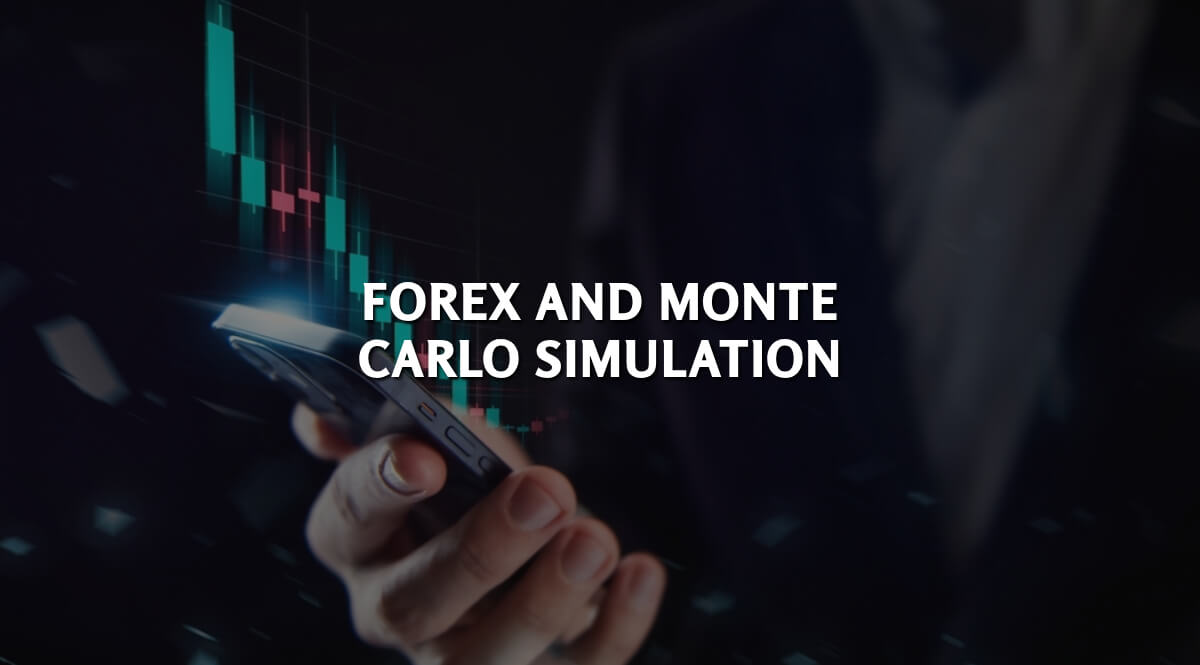Forex and Monte Carlo Simulation
Monte Carlo simulation is a powerful statistical technique. It is used to model the probability of different results in a process that can’t easily be predicted due to the intervention of random variables.
There is no lack of inquiries regarding the “Forex Monte Carlo simulation.” We need to mention that Monte Carlo simulation is utilized across various fields, including finance and engineering, to understand the impact of risk as well as uncertainty in prediction and forecasting models.
History and basic principles
Stanislaw Ulam worked on the Manhattan Project during World War II and developed the technique. A famous mathematician shared his idea with John Von Neumann. It is noteworthy that Stanislaw Ulam and John Von Neumann worked together in order to refine the technique mentioned earlier.
It is important to identify the factors that impact the model and discover their potential values or ranges in order to determine a domain of potential inputs. As a reminder, probability distributions are frequently used to characterize the above inputs.
Create random inputs: From the probability distributions specified in the first step, values are chosen randomly using a random number generator. This procedure is done several times to produce a sizable number of potential situations.
Carry out deterministic calculations: The model is evaluated for every set of random inputs to calculate an output. Importantly, this stage entails producing an output by applying the input data to a deterministic formula or collection of rules.
Results are combined after a number of rounds in order to create a probability distribution of the potential possibilities. Importantly, this offers a comprehensive understanding of the possible outcomes as well as their probability.
Applications
As stated earlier, Forex Monte Carlo simulation is widely used across various fields.
In the case of finance, it is possible to utilize Monte Carlo simulations to model the behavior of financial instruments and portfolios under various scenarios.
For example, it is possible to utilize Monte Carlo simulations to estimate a portfolio’s Value at Risk. It is noteworthy that Value at Risk measures the potential loss in value of an asset or portfolio over a defined period for a given confidence interval. By simulating a huge number of potential market scenarios, analysts can better understand the risks and returns affiliated with their investments.
Engineers are also actively using Monte Carlo simulations. For what?
They utilize Monte Carlo simulations in order to account for uncertainties when it comes to design parameters and operating conditions. Let’s take a look at the case of structural engineering.
What’s important, engineers can use the method to determine a structure’s reliability by considering the variability in material properties, etc. This helps in designing structures that aren’t only efficient but also robust and safe.
We shouldn’t forget about supply chain management as well. For example Monte Carlo simulations help forecast demand, optimize inventory levels, and other tasks. By simulating different demand scenarios and supply chain variables, businesses have the opportunity to develop strategies that can help minimize costs and maximize service levels.
Project management
Monte Carlo simulations also play an important role in project management. People may ask, How? Let’s find out!
Managers can create more realistic schedules and budgets by taking into account the uncertainty and variability in project tasks. Besides, managers can identify the key risk factors that could impact project success.
Advantages and disadvantages
It is worth noting that Monte Carlo simulations can model numerous systems and processes, making them applicable across various disciplines.
Insight into uncertainty: By generating a range of possible outcomes and their probabilities, the technique provides a detailed picture of uncertainty and risk, often more informative than single-point estimates.
Scenario analysis: Besides, the technique mentioned earlier, allows for examining complex systems under different scenarios.
Ease of implementation: Thanks to modern technologies, it is quite easy to implement Monte Carlo simulations, even when it comes to complex models.
What about the disadvantages?
Of course, we can’t forget about the disadvantages.
For instance, Monte Carlo simulations can be computationally demanding, especially for complex models with many variables and iterations.
Quality of input data: The accuracy of the results depends heavily on the quality and realism of the input data and probability distributions. Thus, poor input data can lead to misleading results.
Interpretation of results: While the technique provides a range of outcomes, interpreting these results can be challenging, particularly for those without a strong statistical background.
Example
Consider a simple example of estimating a project’s completion time probability. Let’s assume a project has three tasks, each with an uncertain duration. The following distributions represent the durations (in days):
Task 1: Uniform distribution between 10 and 20 days
Task 2: Normal distribution with a mean of 15 days and a standard deviation of 5 days
Task 3: Triangular distribution with a minimum of 5 days, a most likely value of 10 days, and a maximum of 20 days
Utilizing the Monte Carlo simulation, we can randomly sample durations for each task, sum them to obtain the total project duration, and repeat this process thousands of times. The resulting distribution of total project durations provides insights into the likelihood of completing the project within various time frames.
Monte Carlo simulation and Forex market
It is impossible to overstate the role and importance of Forex Monte Carlo simulation. Without exaggeration, it plays an important role in the Forex market.
The Forex market is no stranger to volatility. People should keep in mind that the world’s largest financial market is characterized by high volatility and a multitude of influencing factors, making it a main candidate for stochastic modeling techniques such as the Monte Carlo simulation.
Basic application in Forex
Historical data analysis: The first step involves collecting historical data on currency price movements. Importantly, this data serves as the basis for identifying the statistical properties of the currency pairs.
Defining probability distributions: Based on the historical analysis, appropriate probability distributions are assigned to model the price changes. Commonly used distributions include normal distributions for returns and log-normal distributions for prices, reflecting price changes’ continuous and multiplicative nature.
Generating random scenarios: The technique mentioned earlier generates many random price paths for the currency pairs. Each path represents a potential future scenario. This is done by repeatedly sampling from the defined probability distributions.
Simulating price movements: For each generated scenario, the future price movements of the currency pair are simulated over the desired time horizon. This can be done using the formula:
Analyzing results: The simulation results provide a distribution of possible future prices. This distribution can estimate the probability of various outcomes, such as hitting a specific price target or breaching a stop-loss level.
Benefits
Risk assessment: Forex Monte Carlo Simulation helps traders assess the risk of their positions by providing a probabilistic view of potential future price movements.
This allows for better risk management and decision-making.
Strategy evaluation: Traders can use the technique to test the robustness of their trading strategies under a wide range of market conditions. For instance, it will be easier to identify potential weaknesses, etc.
Portfolio optimization: By simulating the performance of different currency pairs, traders can optimize their portfolios to achieve a desired balance of risk and return.
In conclusion, Monte Carlo simulation is a useful tool for modelling uncertainty and assessing risk. Its ability to deal with complex systems and provide a comprehensive view of potential outcomes makes it invaluable in many fields.
Nevertheless, it is important to take into consideration the quality of input data and the need for appropriate interpretation of the results in order to take advantage of this technique.
The post Forex and Monte Carlo Simulation appeared first on FinanceBrokerage.
































